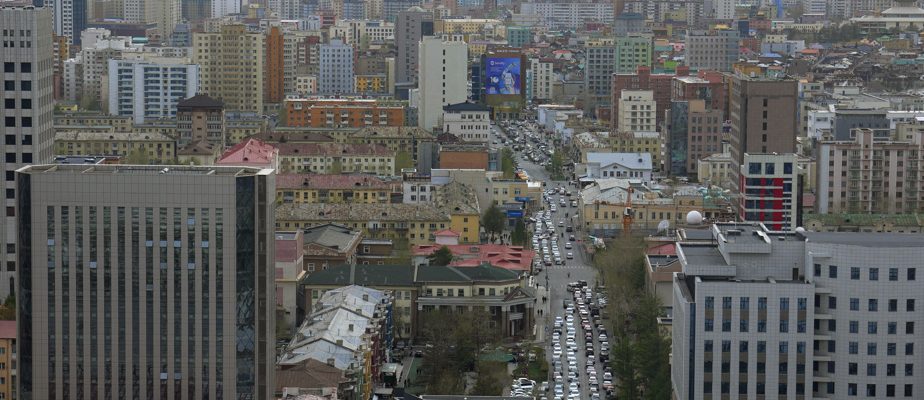During a visit to Washington in 1969, Prime Minister Pierre Elliott Trudeau said that “living next to you is a bit like sleeping with an elephant”. Imagine sleeping with a dragon and a bear, with authoritarian and revisionist tendencies to boot.
This is the case of Mongolia, a landlocked liberal democracy whose only neighbors are Russia and China. A unique geopolitical situation in the world. How can a minor power of just over 3 million people navigate such waters?
A country cannot escape its geography. In the case of Mongolia, this means that China absorbs 93% of its exports and that Russia supplies 81% and 87% of its oil and gas. And the expected construction of a trans-Mongolian gas pipeline carrying Russian gas to the Chinese market can only reinforce its already strong dependence on these two giants. This general trend will be hard to reverse, as Russia pivots eastward and tries to get closer to China following its invasion of Ukraine and its ostracism from the West.
Ulaanbaatar has no choice but to maintain good relations with Russia and China. At the same time, the least densely populated country in the world tries to counterbalance this dependence as much as possible through its “third neighbor” policy, which consists of developing relations beyond its immediate environment and in particular with liberal democracies. such as Japan, South Korea, the European Union, the United States and Canada, which moreover played an oversized role at the end of the 2000s as a foreign investor in its abundant mineral resources .
Planetary economic interests
In this regard, French President Emmanuel Macron visited Mongolia for the first time at the end of May. Some in Ulaanbaatar might have hoped he would bring a nuclear power plant with him in his luggage to help Mongolia deal with an energy and pollution crisis due to a shaky power grid and dependence on coal. for the production of electricity, in particular in the capital. More seriously, the announcements made after this visit focused on “critical minerals”, including uranium.

PHOTO LUDOVIC MARIN, AGENCE FRANCE-PRESSE
French President Emmanuel Macron is welcomed by his Mongolian counterpart, Ukhnaagiin Khürelsükh, in Ulaanbaatar.
A few days later, it was the turn of the US Under Secretary of State for Economic Growth, Energy and the Environment to travel to the Mongolian capital to sign a memorandum of understanding to collaborate on these minerals.
And in the last week of June, the meeting of women ministers of foreign affairs was held, organized by Mongolia, with, among others, the French minister Catherine Colonna – co-sponsor of this meeting with Germany –, who took the opportunity to continue discussions on critical minerals.

PHOTO TAYLOR WEIDMAN, BLOOMBERG ARCHIVES
Aerial view of an area of the Oyou Tolgoi mine in southern Mongolia
We must highlight the case of copper, the “electrification metal”, essential to the energy transition and whose supply will hardly meet demand in the decades to come. Oyou Tolgoi, one of the largest copper mines in the world with its Manhattan-sized galleries, majority owned by Rio Tinto, has just been commissioned in the middle of the Gobi Desert after more than a decade of construction underground and difficult negotiations with the Mongolian government.
Here, Mongolia’s interest in reducing its dependence on China meets the interest of its “third neighbours”, who are also trying to reduce theirs with regard to Beijing’s growing domination over the market and the refining of these minerals.
This approach is now widespread in Mongolia’s international relations, and it goes beyond economic interests. By developing their economic relations with Ulaanbaatar, the countries of the Organization for Economic Co-operation and Development (OECD) also hope to strengthen its democracy.
Political instability
Mongolian democracy is not flawless. Considered “free” for a few decades, with a score of around 85% according to Freedom House, its rank in Reporters Without Borders’ press freedom index has recently fallen, while it plunges in the index of Transparency International’s perception of corruption.
Its governments are also unstable, with an average lifespan of one and a half years. But this is symptomatic of a rather unusual feature: power has gradually dispersed in the Mongolian political system since the democratic revolution of 1990, as it tends to become more centralized and concentrated in an increasingly fertile world. for authoritarianism. For example, the recent constitutional changes go in the direction of an enlarged Parliament (126 members instead of the current 76) which will be elected by a mixed ballot: majority and proportional.
Mongolia is also trying to define itself as a sort of regional mediator by welcoming Ulaanbaatar Dialogues (the eighth edition was held a few weeks ago), which seek to foster cooperation on security issues in Northeast Asia.
With rising tensions between the United States and China, rumors of war over Taiwan, hostile Russian behavior and the ongoing crisis on the Korean Peninsula, there is no shortage of security issues involving nuclear powers in the region. A small power in the middle of the steppe can only hope that these giants will keep the dialogue open and let it live peacefully and democratically.
